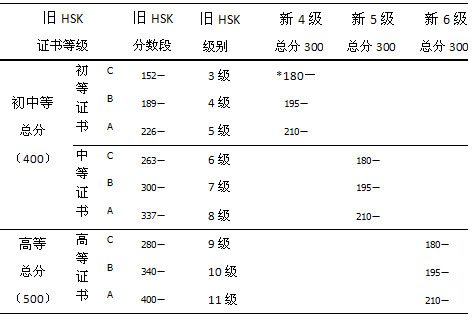HSK Test:
Welcome to the Popup Chinese HSK test guide. On this site you will find the largest archive of HSK test materials available online, with sample tests, vocabulary lists and mobile apps for both the new and the classic HSK tests.
To start testing, simply select your level from our HSK test menu on the right and be testing in seconds (free account required). You are also welcome to download our HSK vocabulary lists, all of which have been digitized from the official wordlists circulated by Hanban in 2011. Also available are one-click flashcards you can practice with along with a massive archive of sample HSK tests you are welcome to browse.
Before we get into the details of the HSK test, we should state up front that some of our HSK test prep materials require you to
create a free account here at Popup Chinese. In addition to HSK materials, your free account will also give instant access to thousands of our Chinese podcasts and lessons, so it is a good idea if you are serious about getting fluent in mandarin.
The rest of this page covers a brief background about the HSK test (both new and classic) along with our thoughts on the exam as teachers and students ourselves and some blunt suggestions for students considering taking it. If you're not sure whether you should be taking the HSK test and what you can get out of it, you should find this useful.
About the HSK Test:
The HSK test started in 1984 as a Chinese proficiency test for both foreigners, but also Chinese citizens for whom mandarin was a second language. The test was developed and run by the Beijing Culture and Language University, and lurched along for about a decade in relative obscurity before it began to be used in the mid-1990s as part of the admissions process for applications to Chinese universities.
Starting around 2005, a power struggle during the run-up to the Beijing Olympics threw the test into disarray. As the Chinese government poured more resources into promoting China's soft power abroad, the test became the focus of a dispute between BLCU and Hanban, the national-level agency tasked with promoting Chinese learning. This led to direct organizational conflict within the Chinese government over which organization had the authority to manage the test, as well as collect the incidental revenues, etc.
Initially, bureaucratic stalemate prevailed and China entered a "twin-test" stage. Hanban began offering its new HSK outside China and promoted the tests heavily through the Confucius Institutes it was funding abroad. Meanwhile, the classic HSK continued to be offered within China to both foreign and Chinese citizens. This situation lasted until 2010 when Hanban triumphed in its bureaucratic struggle against BLCU and won the right to offer its test as the sole authoritative HSK within China.
Now this is why this matters to you: because of the political split describe above, the two HSK tests developed a radically different focus. The classic HSK continued to operate as an advanced proficiency test without much regard for commercial or international use. In contrast, the Hanban HSK test aims to appeal to students with minimal mandarin proficiency. It also aimed to increase its commercial utility by following the testing structure laid out by the
Common European Framework of Reference for Languages.
This divergence is obvious from the table below. What this chart shows is that the first level of the older exam corresponds to about level four on the new exam. The remaining materials in our opinion fall at about the intermediate level.
 So... should you take the HSK test?
So... should you take the HSK test?
In our professional opinion, we believe the classic test is more useful than the new exam in most situations. If you want a test that will improve your Chinese and force you to get better, we recommend checking out our archive of classic HSK lessons, which fall into three major difficulty tiers:
HSK Beginner,
HSK Intermediate, and
HSK Advanced.
Vocabulary lists are available for these levels although they are only loose approximations of the basic knowledge students were expected to have, so use those lists only for reference.
If you need accreditation for work or study in China, you will have to face the New HSK test. As could be seen in the table above, this test consists of six different levels. These are:
The Major Uses of HSK Certification:
- certifying the necessary proficiency to enter a Chinese college or university as a graduate or undergraduate student
- demonstration of competence in application for an HSK scholarship for support in academic studies
- certification of exemption from taking Chinese language courses
- admission to mainland companies for employment
HSK Test Format
The HSK test consists of a variety of test types. Tests are normally divided into groups of 15 which all follow a common format: listening, writing, reading, multiple-choice, rearrange-words-into-sentences, etc.. The time breakdown works out so that you have approximately 45 seconds per question across the entire exam.
Because the test is offered more broadly overseas, there is less consistency in terms of what you can expect otherwise. Depending on the level, you may be able to listen to audio passages more than once, for instance. There are also reports that the certain versions of the exam offered at very basic levels now include pinyin in some questions instead of characters. Despite this, multiple choice questions continue to dominate the exam, so we recommend preparing using those.










